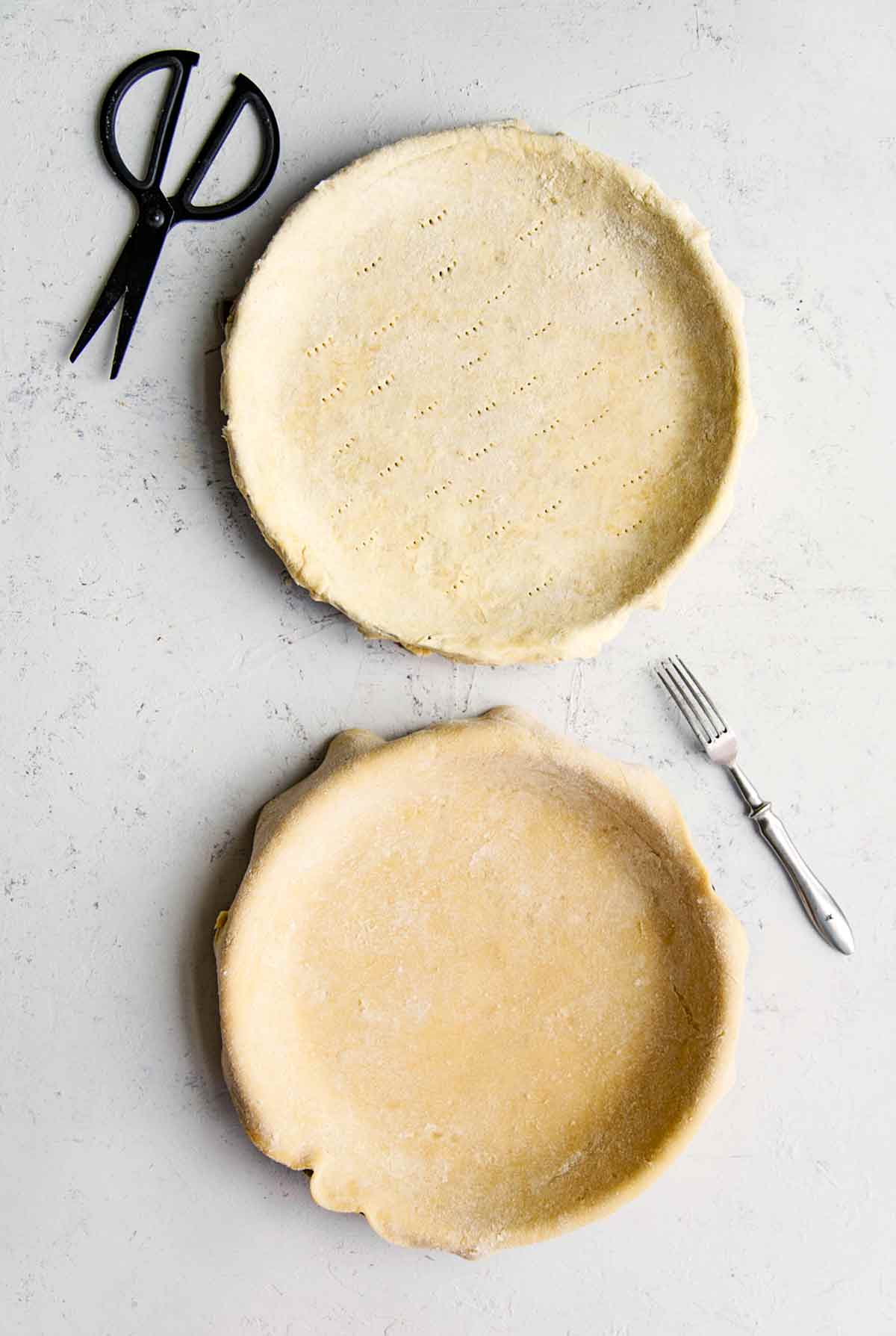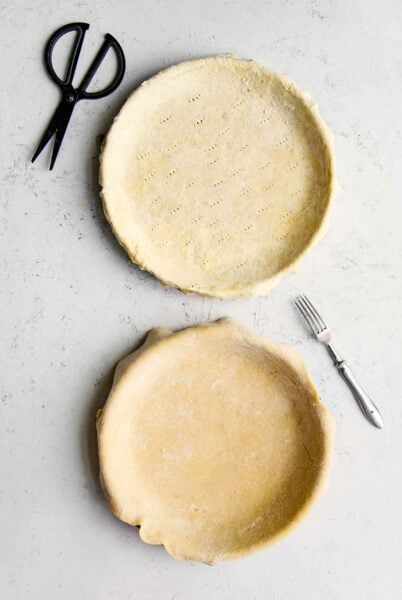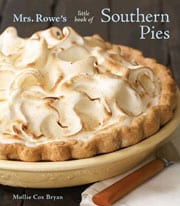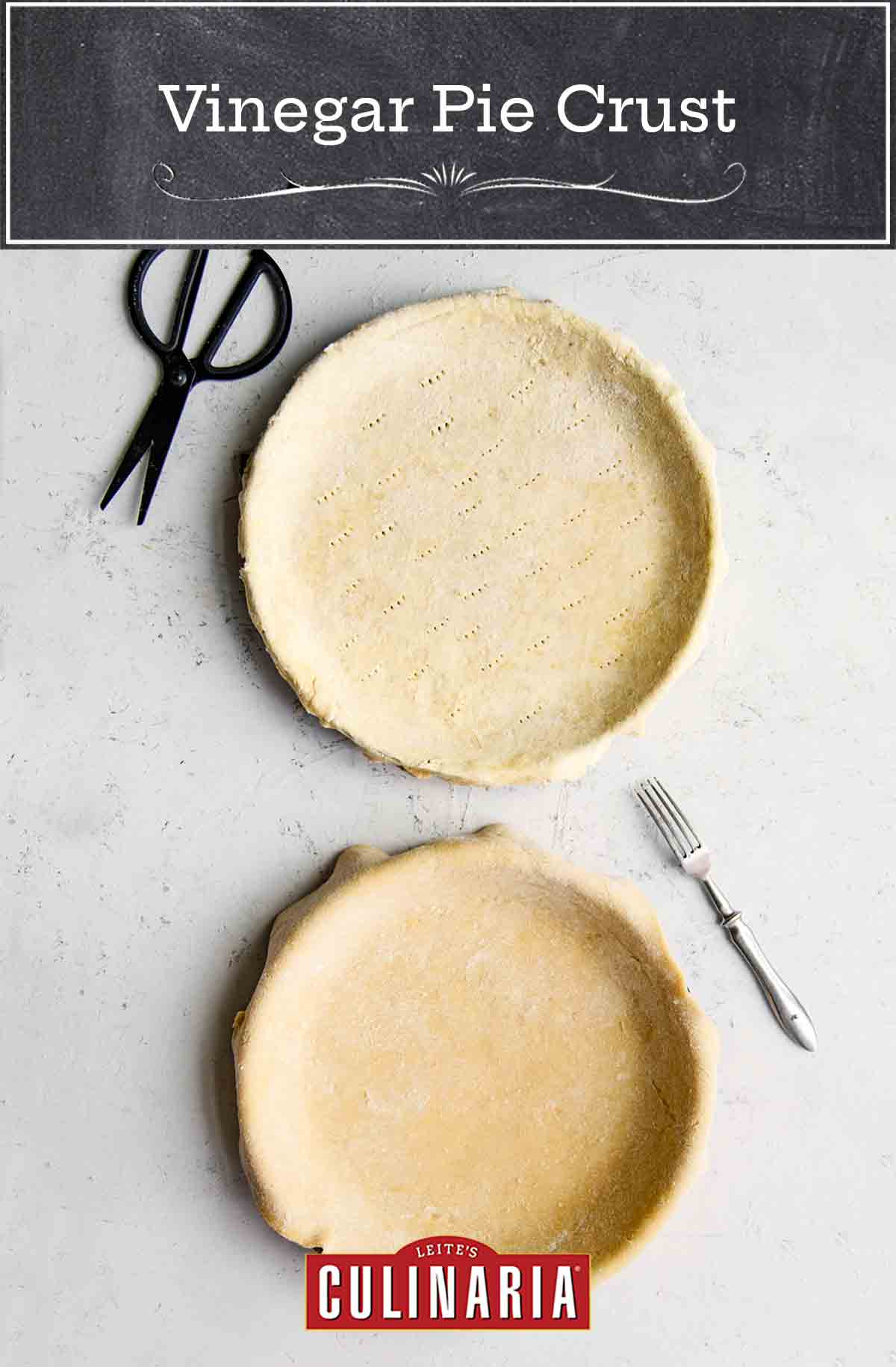
The vinegar in this crust is a flavorless stabilizer, making the dough more forgiving and patchable. In addition to being easy to work with, it also tastes great—even butter-loving pastry fans enjoy the flavor.–Mollie Cox Bryan
Want to save this?

Vinegar Pie Crust
Ingredients
- 2 cups all-purpose flour, plus more for the work surface
- 1/2 teaspoon salt
- 1 cup plus 1 tablespoon vegetable shortening
- 1 1/2 teaspoons distilled white vinegar*
- 1 egg, lightly beaten
- 4 to 6 tablespoons ice water
Instructions
- Sift the flour and salt into a bowl and cut in the shortening with a pastry blender or, if you must, your fingertips until it is the size of small peas. Using a fork to lightly mix the ingredients, add the vinegar, egg, and just enough ice water to moisten the dry ingredients, being sure to add the ice water 1 tablespoon at a time. The dough will be sticky.
- Divide the dough in half, form it into 2 equal-size balls, then flatten each ball into a disk. Roll out the crusts right away or wrap each tightly in plastic wrap and refrigerate for up to 2 weeks. When you're ready to bake a pie, on a lightly floured surface, roll out a portion of dough to a thickness of about 1/8 inch, fit it into a 9- or 10-inch pie plate, and proceed according to your pie recipe.
- To bake an empty crust, preheat the oven to 400°F. Press 1 rolled-out crust into a 9- or 10-inch pie plate. Line with parchment paper and weigh the crust down with dry beans or pie weights to keep the crust from bubbling or shrinking. To parbake the pie crust, bake for 10 minutes, until firm and lightly browned. To prebake the crust, remove it from the oven after 10 to 20 minutes, when you first see a golden hue to the crust.
Notes
*Why would I add vinegar to a pie crust?
Think of it as a secret ingredient. A dash of vinegar in your pie dough will help to prevent the formation of gluten while you’re rolling everything out. That formation of gluten is what makes for a tough crust. And trust us…that’s what all pies are judged on, no matter how fantastic the filling.
Explore More with AI
Nutrition
Nutrition information is automatically calculated, so should only be used as an approximation.
Recipe Testers’ Reviews
The vinegar pie crust recipe is a TC for all the right reasons. Now if this tester could only get her act together and learn how to roll a pie crust, it would be mind-bending. The recipe is uncomplicated, straightforward, and makes one sticky dough. Never mind what it looks like or how it behaves—when it came to the finished bake-off, my tasters were licking their plates, and the pie plates, too.
I used this for a from-scratch banana cream pie for a Father’s Day treat. I only used 1 tablespoon of the ice water, and even that made a really wet, sticky dough. But after baking, who really could remember all of that when faced with the flakiest, most delicate, delicious pie crust this side of a spatula? Certainly not us, and we give it a TC+.
Pie crusts are always my least favorite thing to make, but this one was easy as pie! What I really liked is that I could either use it right after making it or put it in the fridge. I put it in the fridge for a few hours and was concerned that when I was ready to roll it out, it would be too stiff to roll. But this was not the case.
This dough is fairly moist, so you can use a good amount of flour to keep everything from sticking without drying it out. I used this with the peach pie recipe and it was a hit all around. Brushing with the butter right out of the oven really helps to keep this a flaky, moist pie.













Crap recipe. The dough would not stay together at all. Honestly a zero-star recipe.
JPMS, I’ve made this recipe several times and didn’t have a problem. I assume when you say it didn’t hold together, you mean to was crumbling and too dry. Let me ask you: Did you weigh the flour or use cup measures? Did you use all the water? In dry conditions, such as in a home in cooler weather, even more water may be required. Do let me know more about what happen so we can di a bit of digging in for you.
Maybe you’re new to cooking? I had no problem with this recipe at all!
Thanks, Cathy.